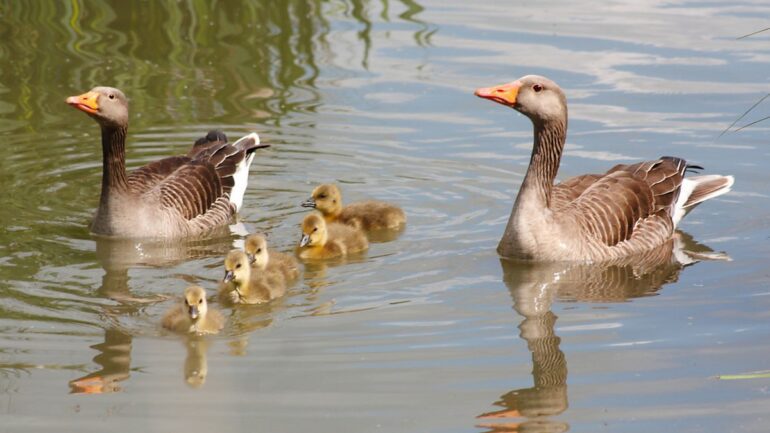TL;DR:
- Researchers are using advanced facial recognition technology to identify and track animal species.
- Biologist Sonia Kleindorfer developed AI to recognize individual geese based on their facial features.
- Facial recognition aids in understanding complex social dynamics and behavior among animals.
- Similar technology is being applied to other species, like harbor seals.
- Collaboration between computer scientists and conservation biologists is key to the future of wildlife conservation.
- Citizen scientists can contribute by sharing photos and locations of animals.
- Ethical treatment of animals is essential, as they can remember faces.
Main AI News:
In a world increasingly driven by technology, the realm of wildlife conservation and ecology is not immune to its transformative power. The recent emergence of advanced facial recognition techniques in the animal kingdom is revolutionizing the way researchers track and study various species. NPR’s Geoff Brumfiel reported on this fascinating development, shedding light on how artificial intelligence is now being applied to the faces of geese, harbor seals, and other animals. This article explores the implications of this technological breakthrough and its potential to reshape conservation efforts.
The Story Behind Goose Facial Recognition
The story begins with Sonia Kleindorfer, a biologist at the University of Vienna and the director of the Konrad Lorenz Research Center for Behavior and Cognition. Kleindorfer’s journey into the world of goose facial recognition was inspired by her role at the research center, which was named after the renowned Austrian biologist Konrad Lorenz. Lorenz dedicated much of his career to studying the behavior of graylag geese and was famously able to identify each individual in a flock by examining their unique facial features.
When Kleindorfer assumed her position as director, she felt compelled to follow in Lorenz’s footsteps. However, she quickly realized that distinguishing between individual geese based on their faces was no easy feat. She confessed to struggling to identify more than a handful before experiencing a mental meltdown. Determined to find a solution, Kleindorfer reached out to a technically minded colleague and posed a crucial question: “Would you be able to write a program to distinguish these faces?“
The Birth of Goose Recognition AI
With her colleague’s affirmative response, Kleindorfer embarked on a journey to create a database of geese photos from every conceivable angle. Armed with this dataset, they developed a facial recognition AI system capable of identifying geese by analyzing specific features of their beaks. Although the process took several years, the team’s efforts paid off. Their goose recognition software now boasts an impressive accuracy rate of approximately 97%, as reported in the Journal of Ornithology.
The Impact on the Lives of Geese
As AI technology continued to advance, one fundamental question remained: Does it matter in the life of a goose? To understand the significance of this innovation, it is essential to delve into the complex social dynamics of geese. Sonia Kleindorfer describes geese as creatures filled with drama, featuring archrivals, jealousy, and retribution. Their social intricacies rely heavily on the ability to recognize individual geese.
Kleindorfer’s research also unveiled that geese can recognize photos of their partners and friends, highlighting the importance of facial recognition in their social organization. This newfound capability could revolutionize the understanding of higher-level social structures among unrelated individuals in the animal kingdom, mirroring how humans rely on facial recognition for social interactions.
Facial Recognition Beyond Geese
While the use of facial recognition technology in the animal kingdom might seem niche, it extends beyond geese. Researchers have applied this technology to a diverse range of species, from lemurs to bears, with promising results. For instance, Krista Ingram, a biologist at Colgate University, developed SealNet, an AI tool that can identify individual harbor seals with high accuracy using only photos.
Before the advent of SealNet, identifying seals required tagging or tracking darts, methods that were not only time-consuming and costly but also stressful for the animals. SealNet offers a simpler and more humane alternative, showcasing the potential of facial recognition in the field of conservation.
The Future of Wildlife Conservation and Ecology
Both Sonia Kleindorfer and Krista Ingram believe that facial recognition technology will play a pivotal role in the future of wildlife conservation and ecology. Researchers will be able to determine the size of populations, understand social interactions, and monitor individual movements more efficiently. However, for this potential to be fully realized, collaboration between computer scientists and conservation biologists will be essential.
Citizen scientists could also contribute to these efforts by capturing photos of animals and sharing their locations with researchers. This crowdsourced data could significantly enhance our understanding of wildlife populations and behavior. Nonetheless, Kleindorfer offers a word of caution: geese, just like humans, have the ability to remember faces, emphasizing the importance of treating them with kindness and respect.
Conclusion:
The integration of facial recognition technology into the study of animal behavior marks a significant milestone in wildlife conservation and ecology. With the ability to identify and track individual animals more accurately and efficiently, researchers are poised to make groundbreaking discoveries that will benefit not only our understanding of wildlife but also our efforts to protect and conserve these precious species. As AI continues to advance, the future of wildlife conservation looks brighter than ever, thanks to the eyes of machines that now recognize the faces of our fellow creatures.

